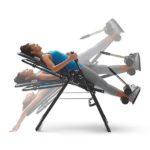1Q 2019 Market Commentary
For as little as $100, you can buy yourself an inversion table (image below), a curious device designed to temporarily relieve back pain. An inversion table is a bit like a workout bench that balances on a pivot. It works by stretching a person’s spine using the pull of gravity. The user lays face up on the bench and slowly rotates backwards until their feet are higher than their head. The greater the angle of rotation, the higher one’s feet move relative to one’s head, and the greater the gravitational pull on the spine.
Figure 1 – Inversion Table

There is mixed evidence in support of inversion tables. Not everyone agrees they are effective or safe. Opinions tend to range from “miracle cure” to “medieval torture device.” From our vantage point, inversion tables look like a good way to get a headache and to become disoriented as the blood rushes from your feet to your head.
We were reminded of inversion tables in recent weeks, because a portion of the U.S. Treasury yield curve started to invert. Subsequently, the blood rushed to everyone’s head, investors got a bit disoriented, and a number of news outlets started to sound warning bells about impending recession. Even though the blood hadn’t rushed to our heads, these warning bells did give us a bit of a headache, because we don’t view the yield curve’s recent movements as being proof that recession is nigh.
Click here for our full First Quarter 2019 Market Commentary

